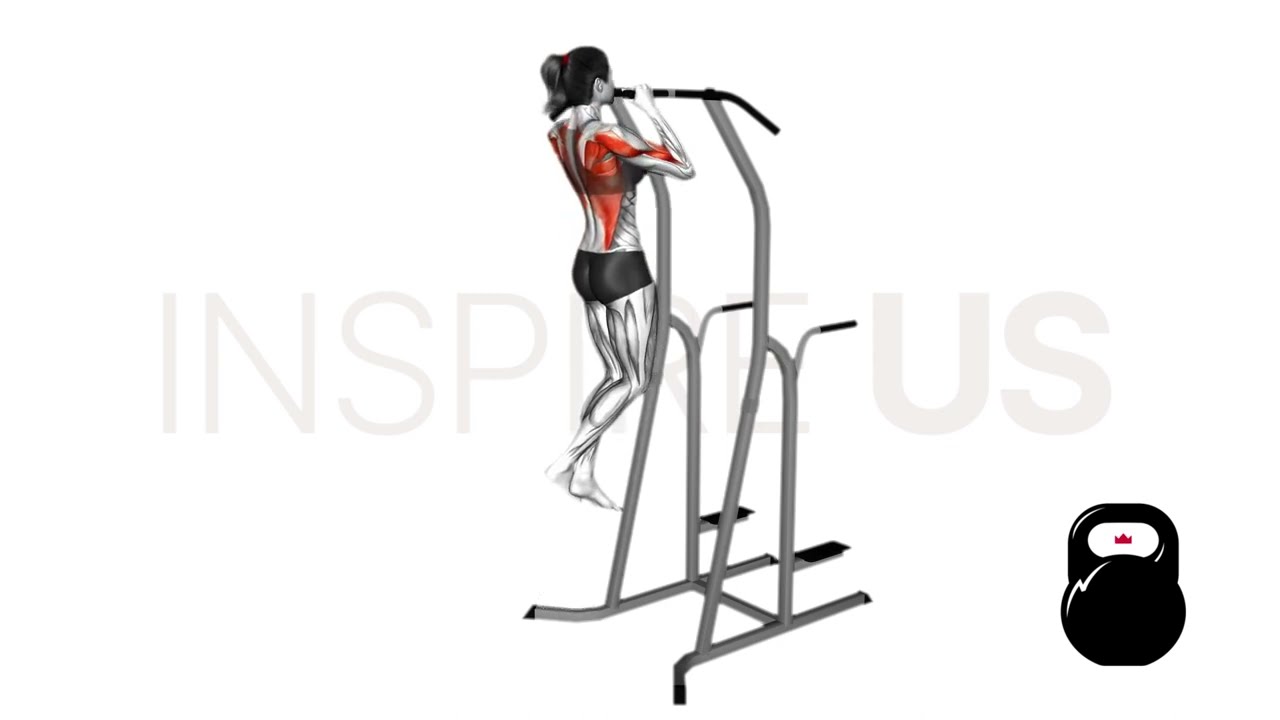Neutral Grip Pull Up: Benefits, Muscles Worked, and More
Few exercises are as iconic as the pull-up, with its impressive visual and effectiveness at training the back - but what some lifters don’t know is that it can also be great for training the arms as well.
This is exactly the case with the neutral grip pull-up; of which is simply a conventional pull-up, but with the hands set closer together, palms facing one another. Such a seemingly small change will actually alter the pull-up quite significantly, hence the two pull-up variations being used for different purposes.
The neutral grip pull-up is used to shift the focus of the pull-up towards the muscles of the arms, and is also used as a substitute to conventional pull-ups for individuals who find the latter exercise to be uncomfortable or repetitive.
What is a Neutral Grip Pull-Up?
In more technical terms, the neutral grip pull-up is classified as a bodyweight multi-joint compound exercise of novice level complexity, most often performed for moderate volume sets.
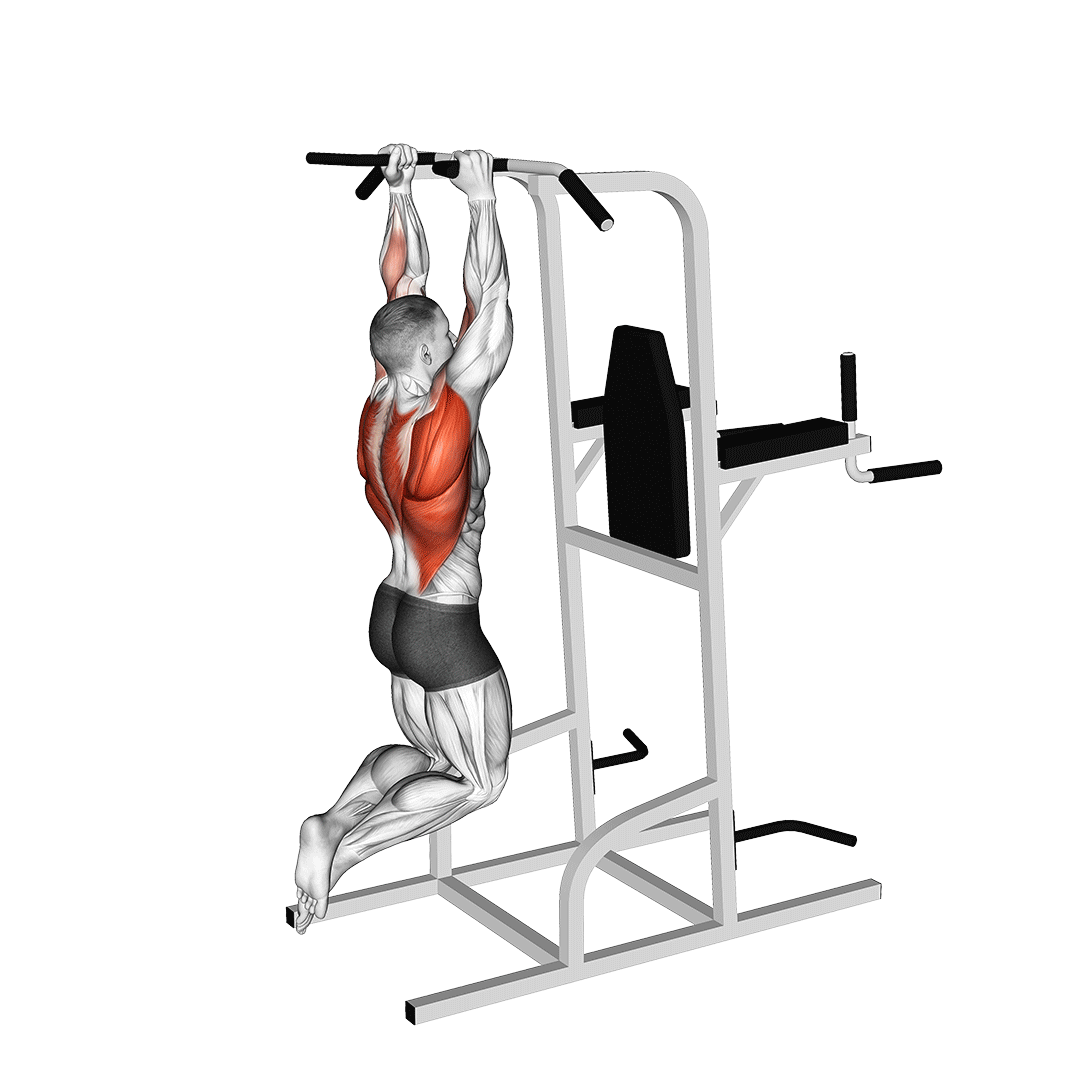
Neutral grip pull-ups are frequently encountered in calisthenic or functional fitness training programs, but are also a favorite among bodybuilders seeking greater arm mass.
Who Should Do Neutral Grip Pull-Ups?
Neutral grip pull-ups are accessible to even novice level exercisers, and are arguably easier to perform than conventional pull-ups.
In particular however, bodybuilders and athletes seeking greater brachialis, brachioradialis and biceps training will find the neutral grip pull-up to be an excellent primary compound movement for their goals.
What Equipment is Needed for Neutral Grip Pull-Ups?
Neutral grip pull-ups will require an overhead parallel bar.
How to do Neutral Grip Pull-Ups
To perform a repetition of neutral grip pull-ups, the lifter will begin in a dead hang with their hands gripping a pair of parallel bars, palms facing each other and the wrists neutral in curvature.
Contracting the core to avoid any swinging of the lower body, the lifter will then recruit the muscles of their back as they draw themselves upwards, bending at the elbows and squeezing the muscles of the arms until they have pulled their head above the bars.
From this point, they will continue the exercise by slowly reversing the motion. The repetition is complete once they have returned to the same dead hang position.
What Muscles do Neutral Grip Pull-Ups Work?
Neutral grip pull-ups are a compound exercise, and as such will recruit more than one muscle group throughout its movement pattern.
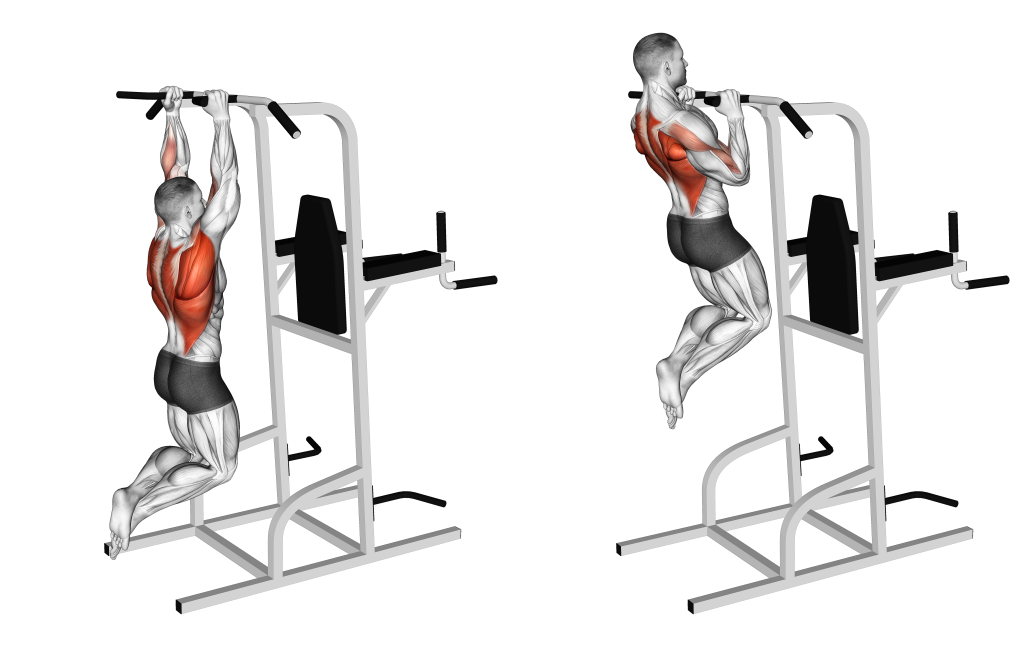
Not all muscles are worked to the same extent, however, and it is the muscles that are worked the most that are called the “primary mover” muscles, whereas others that are used to a lesser degree or only in an isometric capacity are called the “secondary mover” muscles and stabilizers, respectively.
Primary Mover Muscles
The muscles targeted to the greatest level by neutral grip pull-ups are the brachialis, brachioradialis, biceps brachii, latissimus dorsi, trapezius, rhomboids, teres major and infraspinatus.
Each muscle is worked dynamically and to great intensity, but it is the muscles of the brachioradialis and brachialis that are distinctly focused on during the exercise.
Secondary Mover and Stabilizing Muscles
Other muscles that are recruited during neutral grip pull-up execution are the posterior deltoid head, the muscles of the core and the pectoral or chest muscles. These muscles are primarily used to help stabilize the movement and to synergize with the primary mover muscles for greater force output.
What are the Benefits of Doing Neutral Grip Pull-Ups?
Not counting the usual benefits of resistance exercises as a whole, neutral grip pull-ups will also impart certain benefits that are difficult to achieve even with other pull-up variations - making them invaluable for lifters specifically seeking the following advantages:
Arguably the Safest Pull-up Variation
Two of the most common issues relating to the pull-up are in its capacity to cause shoulder and forearm discomfort.
The neutral grip pull-up does not share the same problems, as the close position and neutral set of the wrists places the upper body in a far more advantageous position - thereby reducing the risk of injury and discomfort.
While it is true that the neutral grip pull-up can still result in injury if performed incorrectly, the likeliness and severity of such injuries is distinctly lesser than what would be seen with other pull-up variations. Lifters that find the conventional pull-up to be uncomfortable or too difficult may discover that the neutral grip pull-up is a worthwhile alternative.
Excellent for Arm Mass and Strength
It is well established that pull-ups are effectively an exercise meant to train the muscles of the back (specifically the lats). This is not so much the case with neutral grip pull-ups, of which alter not only the mechanics involved, but also the central focus of the exercise as a whole.
The muscles of the back are worked by neutral grip pull-ups, yes - but it is the muscles of the arms that receive the most benefit from the exercise.
Regular performance will lead to strength and hypertrophy adaptations in the biceps, brachialis and brachioradialis - of which contribute to more than half of the arm’s gross muscle mass.
Functions as an Alternative or Accessory to Conventional Pull-Ups
Whether for variety or to produce more stimulus of the back and biceps, the neutral grip pull-up is often used as an adjunct to the conventional pull-up in calisthenic or athletic training programs.
In cases where an exerciser may find the conventional pull-up to be uncomfortable or otherwise incompatible with their goals, the neutral grip pull-up is also perfectly suitable to take its role within a program.
Greater Capacity for Volume
Because neutral grip pull-ups involve a more advantageous set of mechanics, it is entirely possible for exercisers to perform greater workout volume than they would be capable of with other pull-up variations - thereby leading to greater hypertrophy and improvements in muscular endurance.
Furthermore, this more advantageous positioning means that lifters who are having trouble performing conventional pull-ups for a reasonable amount of volume may find neutral pull-ups to be more suitable for their training needs.
Common Mistakes of Neutral Grip Pull-Ups
Though neutral grip pull-ups are simpler and easier to perform than other pull-up variations, the following are some of the more commonly seen mistakes made by exercisers new to the movement:
Swinging or “Kipping”
Just as is the case in most other pull-up variations, allowing the lower body to move as the exercise is performed will negate much of the training stimulus that is otherwise produced by performing the neutral grip pull-up in a slow and controlled way.
This may be done unintentionally by the exerciser failing to properly contract their core, or intentionally if the exerciser is “kipping” the pull-up so as to generate momentum and make the exercise easier.
For the greatest benefit and safest execution, neutral grip pull-ups should be performed with the lower body as still as possible through core contraction and a focus on contracting the upper body, rather than generating momentum by swinging the legs.
Insufficient Range of Motion
Another common mistake of neutral grip pull-ups is a range of motion that is too short to recruit the muscles to their fullest extent.
Whether this is by the exerciser failing to return to the dead hang stance or by failing to raise themselves over the bar - both cases will result in the benefits of the exercise being reduced in effectiveness.
In order to complete the entire range of motion of neutral grip pull-ups, exercisers should ensure that each repetition starts and ends with their arms fully extended overhead, and that the pull-up bar is beneath their head during the apex of the repetition.
Flaring the Elbows Outwards
While conventional pull-ups involve the elbows pointing somewhat to the sides as the exercise is performed, neutral grip pull-ups feature the arms being placed closer together, with the palms facing each other.
Because of this change in stance, allowing the elbows to flare outwards can place unneeded tension on the shoulders and make the exercise more difficult to complete.
To protect the shoulders and other joints of the upper body, the elbows should stay relatively parallel to the rest of the arm as the exercise is being executed, remaining relatively close to the midline of the body rather than flaring them to the sides.
Neutral Grip Pull-Up Variations and Alternatives
For exercisers that have grown bored of the neutral grip pull-up - or those simply seeking a greater challenge - there are a few possible alternatives that closely replicate the mechanics and recruitment pattern seen in the former exercise.
1. Chin-Ups
If the neutral grip pull-up is still insufficient for biceps recruitment, exercisers may wish to substitute with the chin-up instead.

Much like other pull-up variations, the chin-up is a multi-joint compound exercise that works the muscles of the biceps and back - although it is made distinct by its underhand grip, of which places far more emphasis on the biceps than any other variation.
2. Close Grip Pull-Ups
For exercisers without access to parallel bars, one possible alternative is to perform conventional pull-ups with the hands set closer together, thereby increasing recruitment of the trapezius and brachioradialis without the need for a neutral grip.
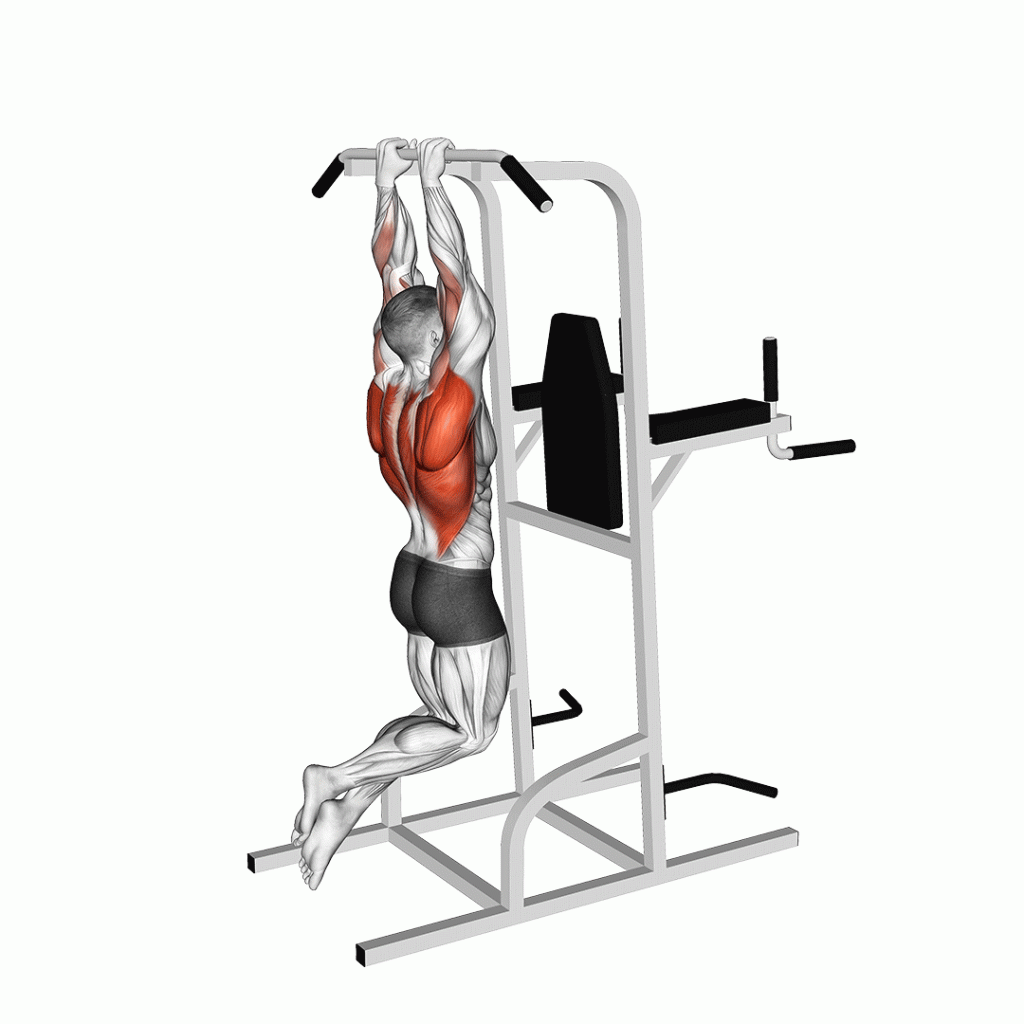
Note that this particular alternative to the neutral grip pull-up can place greater stress on the joints, and it is especially important to adhere to proper form cues due to the greater risk of injury involved.
3. Weighted Neutral Grip Pull-Ups
When the exerciser has reached a level where bodyweight neutral grip pull-ups have become insufficient for progressive overload, the next step should be to raise the resistance of the movement through adding additional equipment.
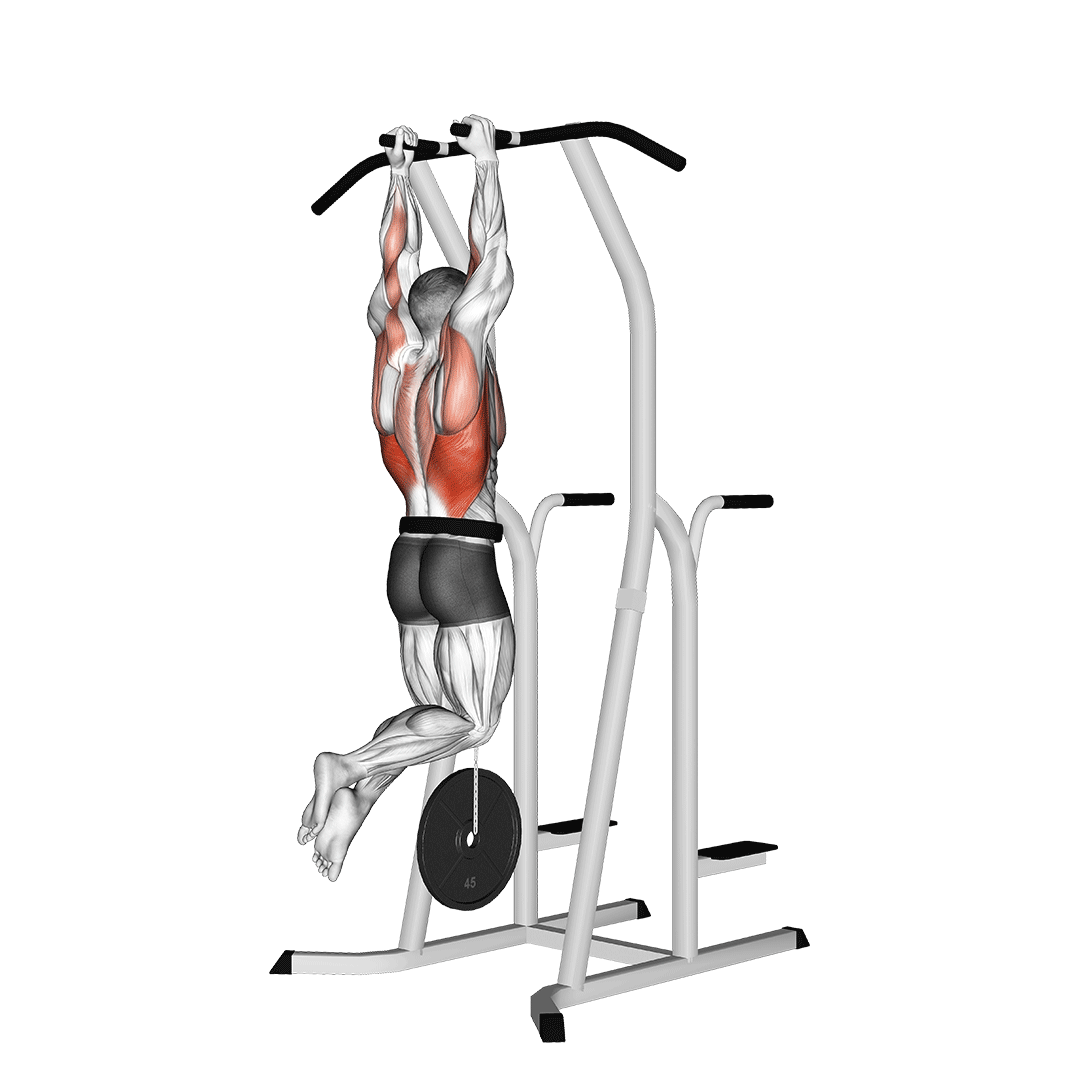
Though this is traditionally done through a dip belt and set of weight plates, exercisers in a pinch may simply grip a dumbbell between their feet as they perform the exercise, enabling them to increase the intensity of each repetition and therefore continue progressing without performing sets of very high volume.
Frequently Asked Questions (FAQ)
Is a Neutral Grip Better for Pull-Ups?
In the context of arm growth and risk of injury - yes, the neutral grip pull-up is one of the best pull-up variations available.
Its parallel grip allows the lifter to better target the brachialis and brachioradialis, of which are two major portions of the arms and contribute greatly to their appearance and function.
Furthermore, the same parallel grip also reduces strain placed on the elbows and shoulders, making it a particular favorite among lifters that suffer from sensitivity in said joints.
What is the Difference Between Wide Grip and Neutral Grip Pull-Ups?
Neutral grip pull-ups place the hands close together and with the palms facing each other, meaning that it is the brachialis and brachioradialis that are recruited to a greater degree.
Wide grip pull-ups, on the other hand, place the hands far apart and in an overhand grip, causing the latissimus dorsi to be the focus of the exercise instead.
Which Grip is Easiest for Pull-Ups?
The pull-up grip form that is most mechanically advantageous is that of the underhand or chin-up grip, as it allows the exerciser to fully utilize their biceps while still preserving the strength of their back muscles.
Many will find that the chin-up allows for easier and more numerous repetitions than any other pull-up variation, though the neutral or parallel grip pull-up may come in as a close second.
In Conclusion
As effective as the neutral grip pull-up can be, remember that it is only a tool in what should be a diverse arsenal for muscle growth. The exercise must be performed with correct form and supported with proper programming and on-point recovery methods.
If you are unsure of how to go about performing the neutral grip pull-up - or have any other question pertaining to fitness - it is a good idea to seek out the advice of a professional.
References
1. Hewit, Jennifer. (2018). A Comparison of Muscle Activation during the Pull-up and Three Alternative Pulling Exercises. Journal of Physical Fitness, Medicine & Treatment in Sports. 5. 10.19080/JPFMTS.2018.05.555669.
2. Astrand P, Rodahl K, Dahl H, Stromme S (2003) Physical Training Textbook of Work Physiology; Physiological Bases of Exercise 4th ed., Champaign, IL, Human Kinetics, USA pp. 346-347

